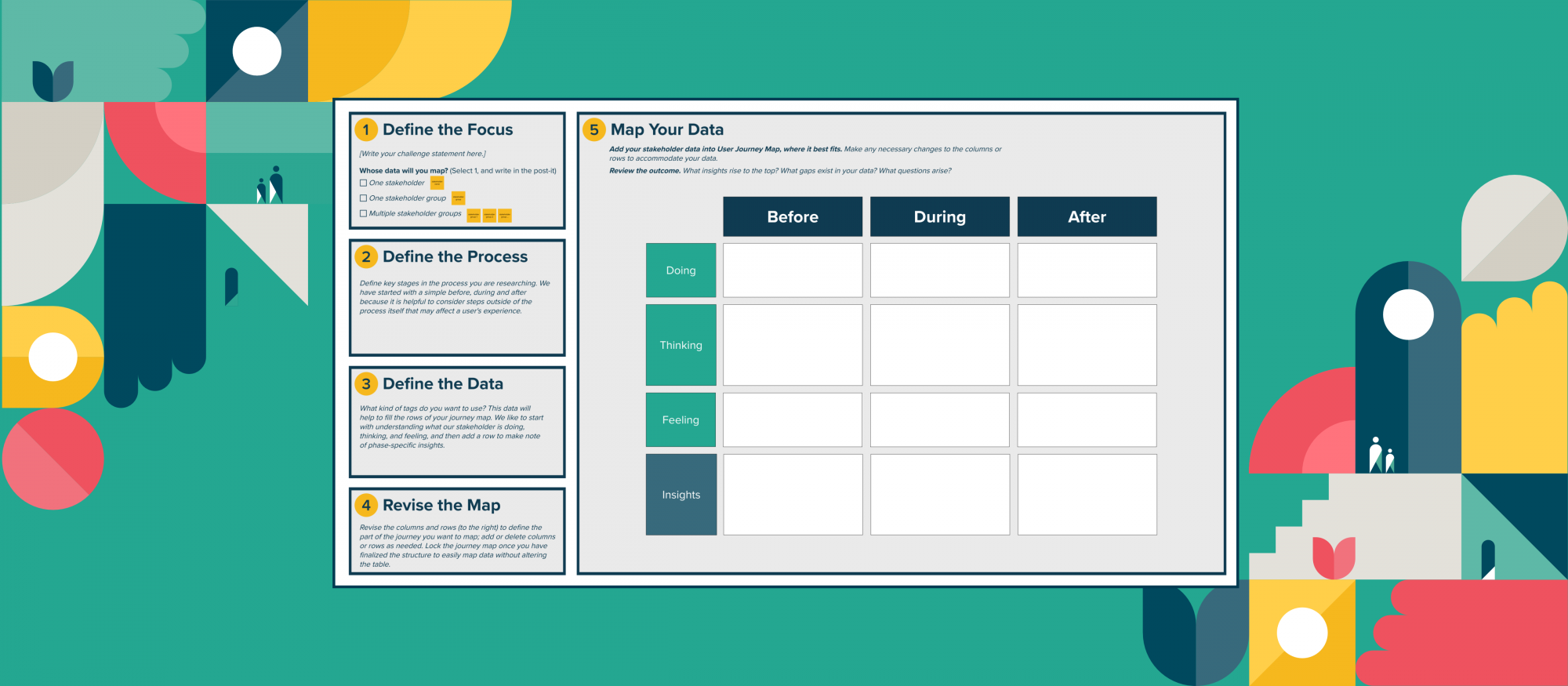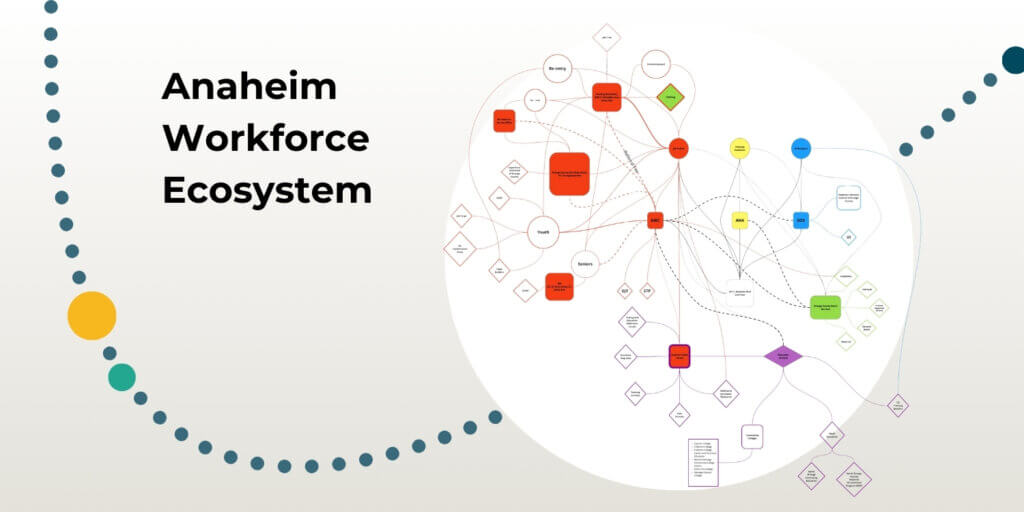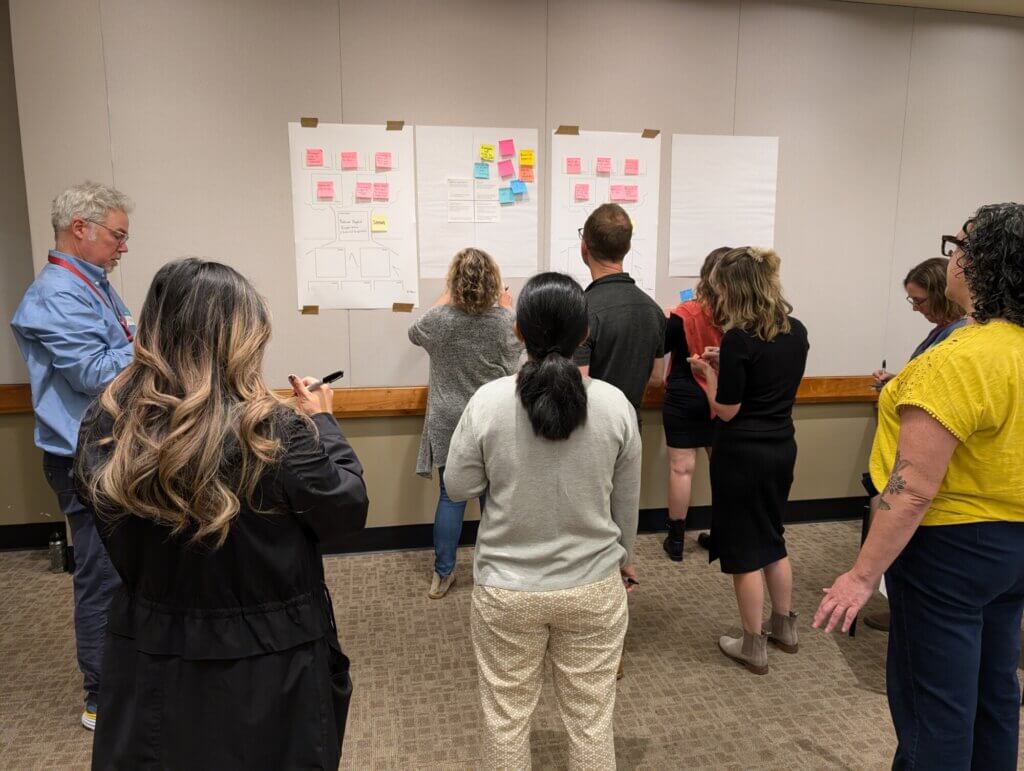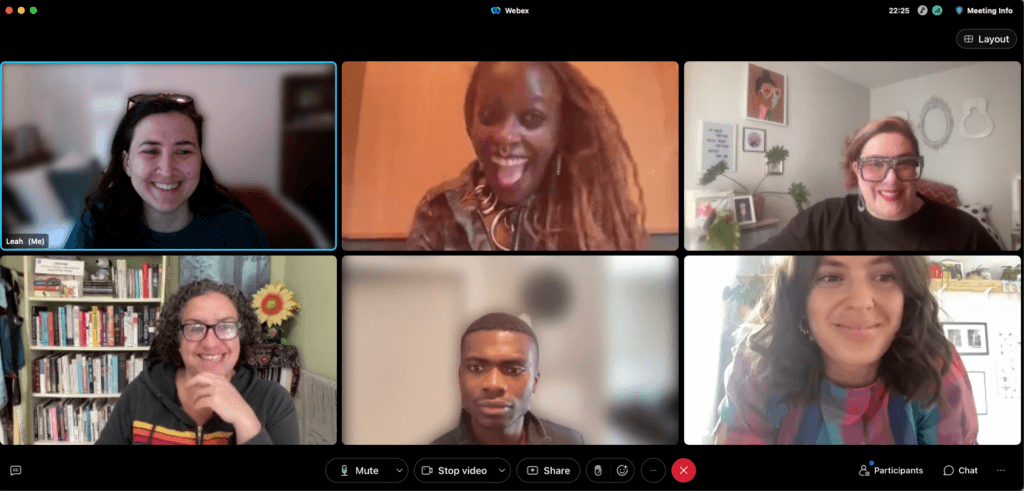Journey Mapping

Last Updated: November, 2021
Think of the journey map as a glorified table that helps you map different types of insights across key steps of a service.
A journey map is a tool to contextualize a stakeholder’s experience over time, typically starting from their awareness of a need through to satisfying that need. It’s a visualization that helps us to identify gaps in our services, source pain points and explore opportunity areas. This is a useful tool during the Define phase, to help us get a clearer picture of the most impactful challenges that our stakeholders face.
Usage Tips
Recommended Roles: 2 Co-Designers
- Initial Setup: 30 minutes
- Mapping the data: this depends on the quantity of data, but plan to take around 30 minutes to process one interview
Design Tips:
- The inputs for your journey map are the insights that you have gathered from interviews, survey responses, or other data collection methods.
- Be sure to set some constraints; a single journey map will not be able to show the full complexity of a service. As you define the columns and rows of your table, be very clear on what you hope to better understand.
Next Steps: Once you have charted your insights across your journey map, examine interesting clusters or gaps that stand out. We use journey maps to help develop a list of opportunity areas that we then evaluate and prioritize with our stakeholders.
Acknowledgments
The journey map template has been adapted from various service design resources, such as This is Service Design Doing (Stickdorn, Lawrence, Hormeß, and Schneider), by Leah Tremblay-Adams, Judi Brown, and Cristelle Blackford.
Licensing
 This work by CivicMakers, LLC is licensed under a Creative Commons Attribution-NonCommercial 4.0 International License.
This work by CivicMakers, LLC is licensed under a Creative Commons Attribution-NonCommercial 4.0 International License.
This license allows reusers to distribute, remix, adapt, and build upon the material in any medium or format for noncommercial purposes only, and only so long as attribution is given to the creator.








